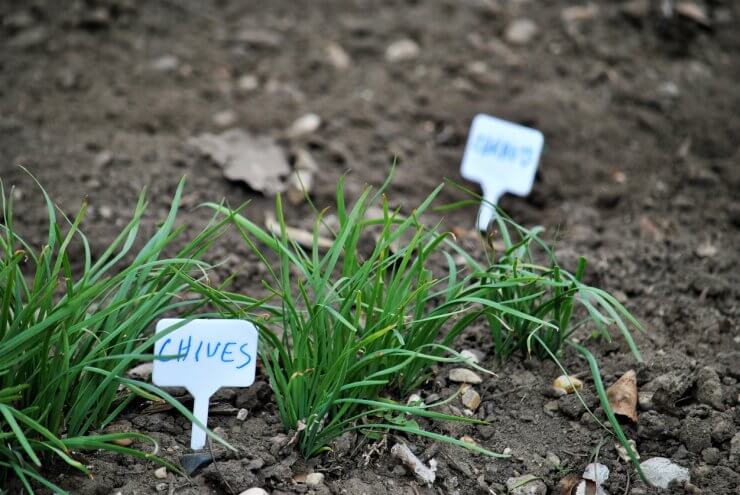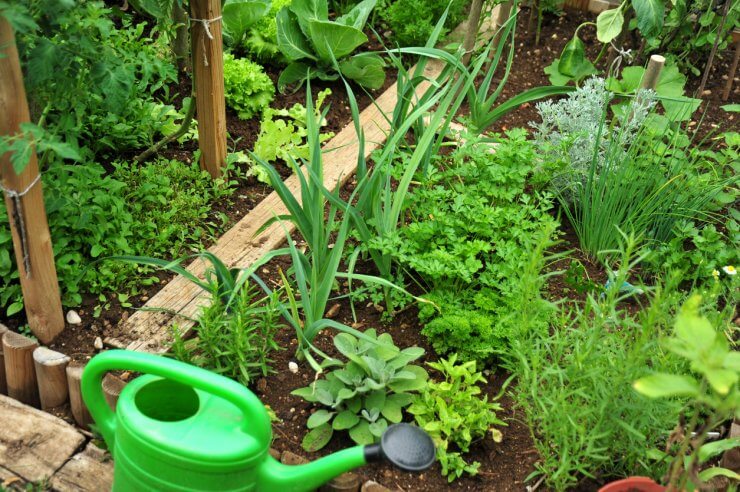
Chives growing in the ground
Chives need lots of sunshine in order to thrive—six to eight hours of sunshine a day. They’ll tolerate partial shade, but that may reduce how much they flower. They also need well-drained soil with a pH of 6.0 to 7.0. They don’t need a lot of fertilizer to get going. For herbs, long, slow growth is part of what adds to the plant’s flavor.
Planting
The easiest way to plant chives is plant rooted starts or splits (also called clumps) in the spring, as soon as the danger of frost is past.
Dig a hole that’s just a little shallower than the root ball and about twice its diameter. Fill in the hole with soil up to the level of the root ball. Press down the soil around the plant until you have a little depression that will hold water and direct it to the plant’s roots. Give your plant a good drink of water, until that little depression fills in. The water will force out any air pockets left in the soil and will settle the roots in.
Plant Spacing
If you’re planting starts, splits, or clumps, give them 6 to 12 inches of space, and keep rows at least 18 inches apart. Remember, these plants like to stretch out.
Factor in enough space for you to get up to the plants to harvest the leaves. You’ll want to be able to get in real close, so you can trim the leaves close to the bottom of the plant.
Over time, if you notice your chive plants seem to be crowded, you can gently dig them up at the end of the season and split the clumps of bulbs; it’s like getting two plants in one! Take the second clump and plant it elsewhere in your garden, in a container for your windowsill herbal garden, or gift it to a fellow gardener who’s looking for something new to grow.
Companion Planting

Vegetable garden with chives and companion plants
Chives can do well growing with carrots, celery, mint, grapes, tomatoes, and watercress. They repel Japanese beetles and some gardeners say chives can deter scab on apples and mildew on cucumbers. Chives are also a good plant to set up as a garden border to protect other crops from deer and rabbits, who don’t like the taste of the leaves.
Preparing for Winter
If you live in an area with winter, you can cut your chives back to about an inch or two high and cover them with mulch to protect them from the cold. Be sure to remove any dead leaves or flowers so your plants have a good head start come spring. If your plants are starting to spread out and you want to split them, you can do it in the fall or in the spring. Just separate the clump in half and plant the two clumps about a foot apart. You’ll only need to do this every two to three years, depending on how prolific your plants are.
How do you plant your chives? What criteria for site selection has worked for you? Do you use your chives as companion plants? Please share your ideas with us.


 Previous
Previous

